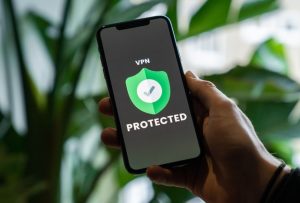In today’s digital world, secure communication is essential for protecting sensitive data and preventing malicious attacks. This article will discuss the best practices for secure communication, including encryption, authentication, data protection, secure protocols and secure storage. By following these guidelines, organizations can ensure that their communications are safe from unauthorized access and malicious actors.
Encryption
Encryption is an essential tool for secure communication, as it scrambles data so that it can only be read by the intended recipient. This ensures that the data is kept safe from unauthorized access. Encryption works by converting readable text into a secret code, which can only be deciphered with a special key. The process of encryption involves scrambling or enciphering data so that it cannot be read without the means to return it to its original state.
Data encryption is used to protect sensitive information from being accessed by unauthorized individuals. It involves transforming readable data into an unreadable format using various algorithms and techniques. Commonly used methods of encryption include Advanced Encryption Standard (AES), Rivest-Shamir-Adleman (RSA), Triple Data Encryption Standard (TDES) and Elliptic Curve Cryptography (ECC).
When encrypting data, organizations should consider several factors such as the type of encryption algorithm used, key length and strength, authentication protocols and secure storage solutions. For example, AES 256-bit encryption provides strong protection against brute force attacks while RSA 2048-bit keys are more suitable for digital signatures.
Organizations should also ensure that their systems are regularly updated with the latest security patches in order to protect against potential vulnerabilities in their software or hardware components. Additionally, they should use secure protocols such as Transport Layer Security (TLS) or Secure Sockets Layer (SSL) when transmitting confidential information over public networks.
Authentication
Authentication is the process of Verifying the identity of a user, process, or device to ensure that they are who they say they are. This is done by requiring proof of identity through authentication methods such as a username and password, biometric information such as fingerprints or retinal scans, or other forms of asserted identification. Authentication technology provides access to resources in an information system by verifying the identity of users and devices.
In authentication, the user or computer must prove its identity to the server or client. This can be done through various methods including single-factor authentication which requires only one form of identification such as a username and password; two-factor authentication which requires two forms of identification such as a username and password plus an additional form like biometric data; multi-factor authentication which requires multiple forms of identification from different categories like something you know (password), something you have (smart card), something you are (biometrics); and zero knowledge proofs where no personal information is shared.
The goal with any type of authentication is to provide secure access while minimizing risk. To achieve this goal it’s important to use strong passwords that cannot be easily guessed; use multi-factor authentication when possible; keep all software up-to-date with security patches; use secure protocols for communication between systems; encrypt data at rest and in transit; store sensitive data securely on servers with appropriate access controls in place.
Data Protection
Data protection is the process of protecting data from unauthorized access. This includes using strong passwords, two-factor authentication, and other security measures to ensure that your data is kept safe. Data security is the practice of protecting digital information from unauthorized access, corruption, or theft throughout its entire lifecycle. To protect against device compromise and theft, encrypting data on the device is essential. Regular audits of endpoints should be conducted to discover threats and security issues. Data security also involves preventing data loss through unauthorized access by implementing measures such as strong passwords and two-factor authentication.
Information backups are safer when stored in a secure building with proper software usage and effective restriction of unauthorized users. It’s important that all employees understand their role in keeping company data safe by following best practices such as not sharing confidential information with outsiders or leaving devices unattended in public places.
Secure Protocols
Secure protocols are designed to protect data from being intercepted or modified. Examples of secure protocols include SSL/TLS, SSH, and IPSec. SSL stands for Secure Sockets Layer and is the standard technology for keeping an internet connection secure and safeguarding any sensitive data. It works by establishing an encrypted link between a web server and a web browser, ensuring that all communication that passes between them remains private.
IPsec is another protocol used to protect customer data. It works by encrypting packets of data sent over the internet so they cannot be read or modified in transit. IPsec also provides authentication so that only authorized users can access the network.
TLS (Transport Layer Security) is a protocol used to provide privacy and integrity between two communicating applications over an insecure network such as the Internet. TLS uses encryption algorithms to ensure that messages are not tampered with during transmission, while also providing authentication so that only authorized users can access the network.
- SSL: Establishes an encrypted link between a web server and a web browser; ensures all communication remains private
- IPsec: Encrypts packets of data sent over the internet; provides authentication for authorized users
- TLS: Provides privacy & integrity between two communicating applications; uses encryption algorithms & provides authentication
Secure Storage
Secure storage is a critical component of secure communication. It involves the use of encryption, authentication, and other security measures to ensure that data is kept safe from unauthorized access. To protect data stored on computers or other devices, it is important to physically protect encryption devices and keys by storing them away from the computer but remembering where they are located. Additionally, encrypting data at the source can help prevent anyone from viewing it without a private encryption key.
Data loss prevention (DLP) methods are also important for secure storage. DLP helps maintain confidentiality, integrity, and availability for data security by authenticating users and verifying their identity before allowing access to sensitive information. Furthermore, DLP can be used to detect any unauthorized attempts at accessing or modifying stored data.
Organizations should also consider implementing secure protocols such as Transport Layer Security (TLS) or Secure Sockets Layer (SSL). These protocols provide an additional layer of protection by encrypting all communications between two systems over a network connection. This ensures that any transmitted information remains confidential even if intercepted by an attacker.
Conclusion
Secure communication is essential for keeping data safe and protecting privacy. To ensure that data is kept secure, it is important to follow best practices for secure communication. This includes using safety measures and good practices to protect devices, such as backing up information and storing it in a secure building with restricted access. Additionally, IT teams should take security precautions to prevent communications from being intercepted and databases from being compromised. Finally, the best way to protect sensitive personally identifying information depends on the kind of information and how it’s stored.
To summarize, following best practices for secure communication can help keep data safe from prying eyes. By taking safety measures such as backing up information in a secure location with restricted access, using encryption protocols when sending messages or files over the internet, authenticating users before granting access to sensitive data or systems, protecting databases with firewalls or other security tools, implementing strong password policies across all systems used by an organization or individual user; these are all effective ways of ensuring that your data remains private.




Be First to Comment